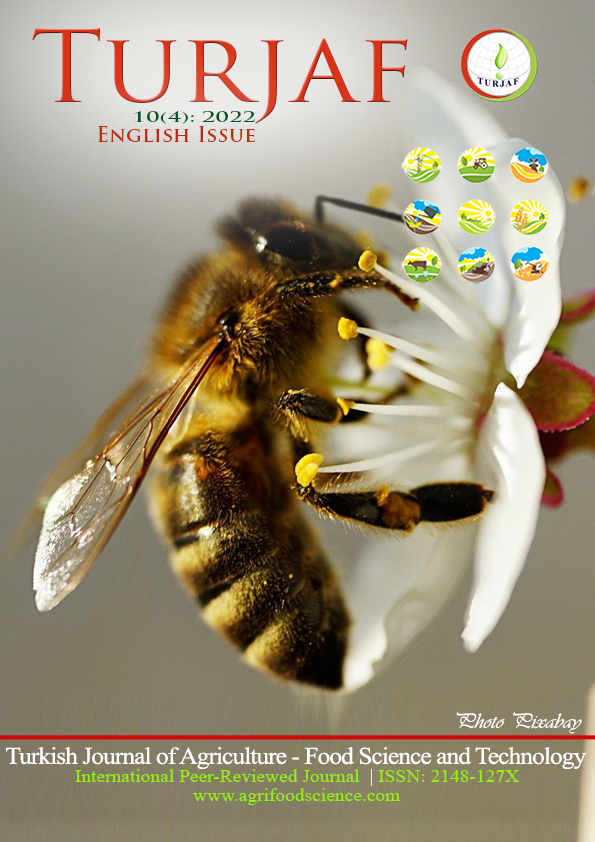Evaluation of Genotoxic Effect of Phloxine by Allium Test
DOI:
https://doi.org/10.24925/turjaf.v10i4.637-641.4708Keywords:
Genotoxicity, Allium cepa test, phloxine, chromosomal aberration, indexAbstract
Phloxine is used as a food dye. In this study, genotoxicity of phloxine at the root tip of Allium cepa L. was investigated. A. cepa L. meristematic root tip cells were treated with ten different doses of phloxine. In this way, the EC50 value was determined. Then, phloxine was applied to root tips at EC50/2, EC50 and EC50×2 doses. Treatment time was determined as 24, 48 and 72 hours. As a result, it was revealed that phloxine caused chromosomal aberrations in cells in mitotic cycle at the root tip of A. cepa. There are equatorial plate shifting in metaphase, laggard chromosome, disturbed spindle, chromosome stickiness, C-mitosis, polar shifting among the observed chromosomal aberrations. It was stated that the % chromosomal aberration index (CAI) increased depending on concentration increase. It has been demonstrated that the highest % chromosomal aberration index occurred at the EC50×2 dose for 72 hours. According to the research, it was revealed that phloxine has a genotoxic effect on the root cells of A. cepa. For this reason, it can be emphasized that care should be taken in its use in foods.Downloads
Published
30.04.2022
How to Cite
Kaya, N. (2022). Evaluation of Genotoxic Effect of Phloxine by Allium Test. Turkish Journal of Agriculture - Food Science and Technology, 10(4), 637–641. https://doi.org/10.24925/turjaf.v10i4.637-641.4708
Issue
Section
Research Paper
License
This work is licensed under a Creative Commons Attribution-NonCommercial 4.0 International License.









